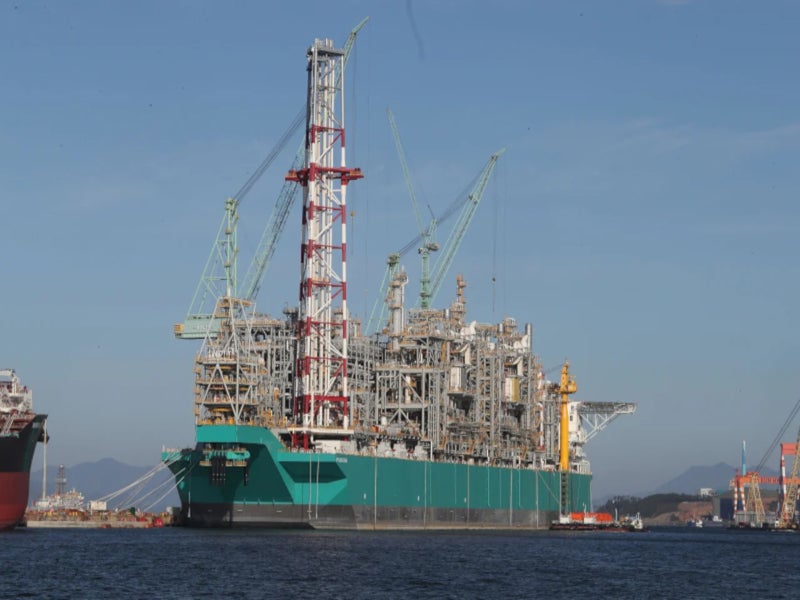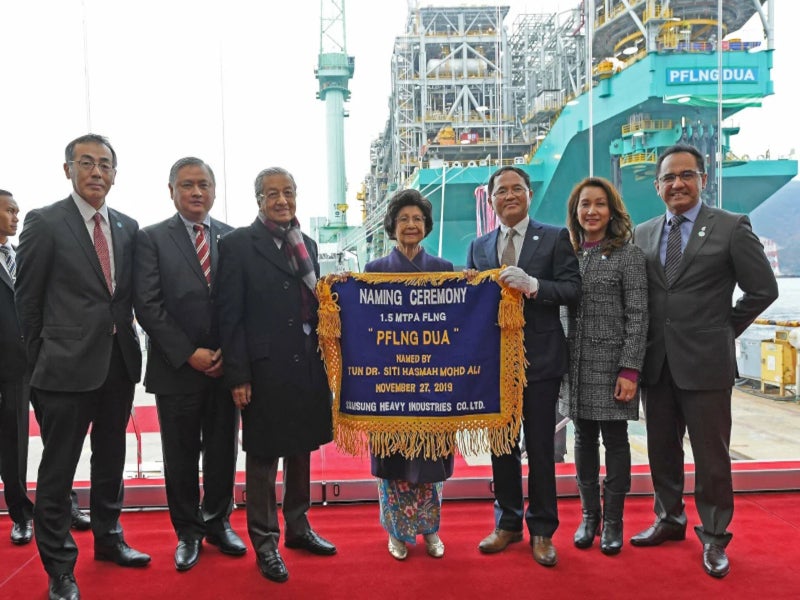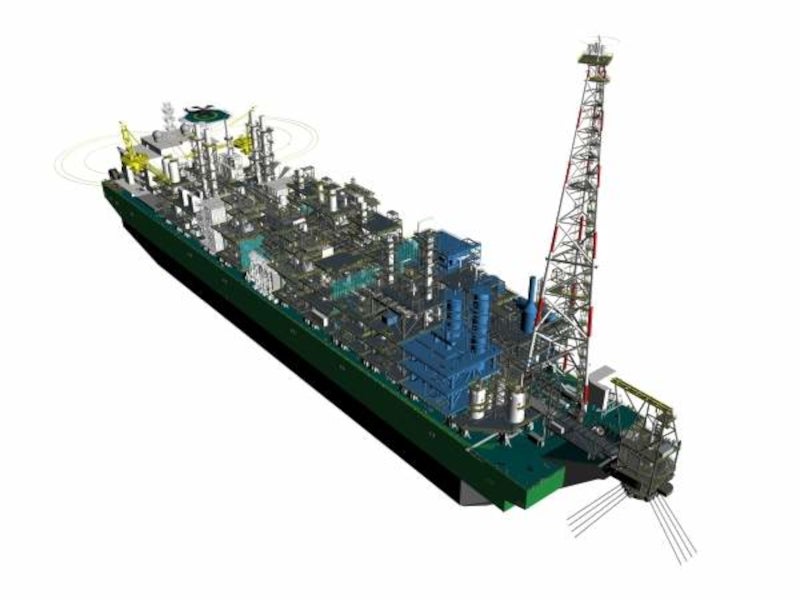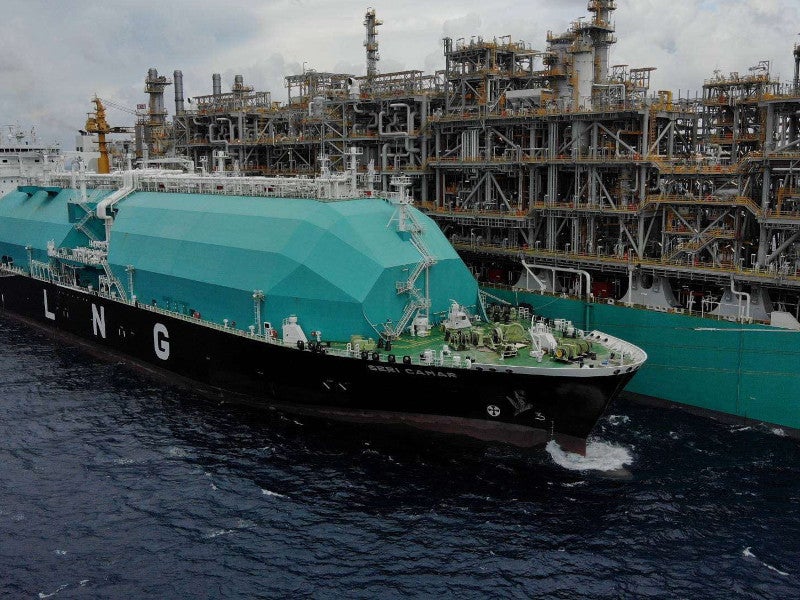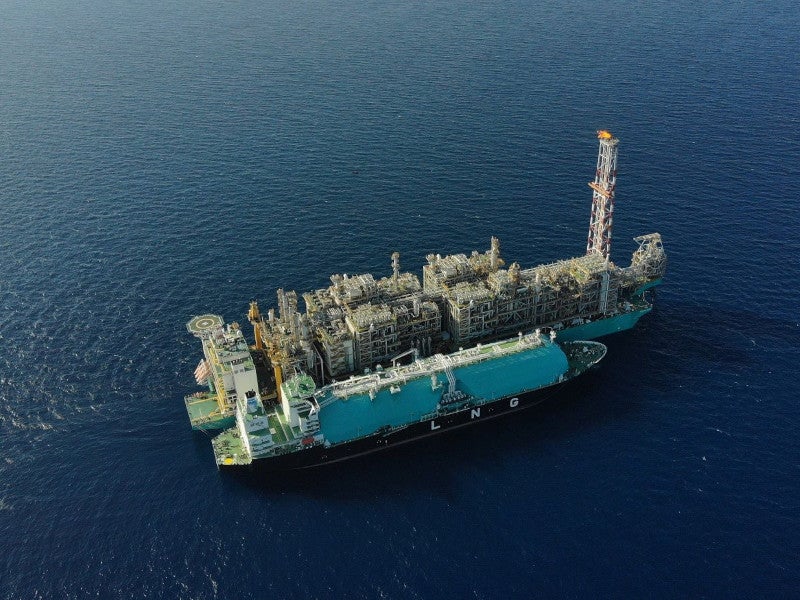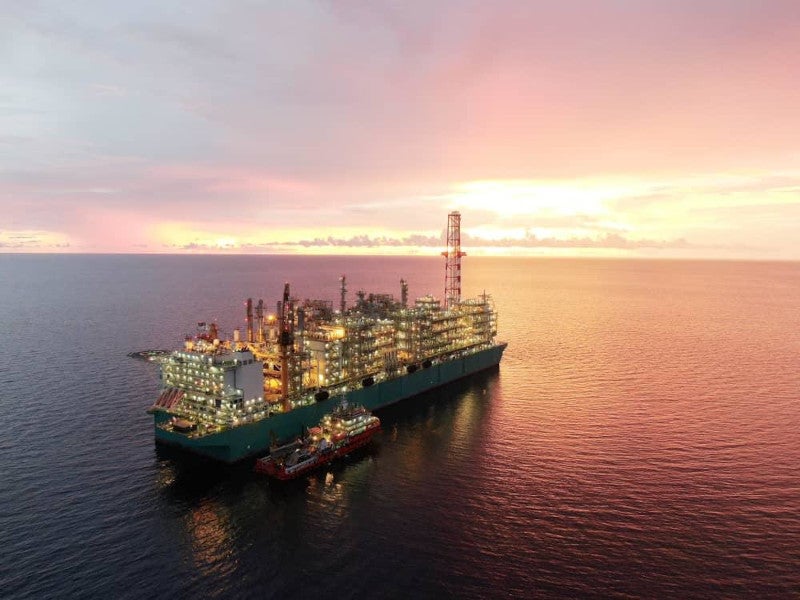The PETRONAS PFLNG DUA project, previously known as PETRONAS Floating Liquefied Natural Gas-2 (PFLNG-2), involved the installation of a new FLNG facility at the deepwater Rotan and Buluh gas fields offshore Malaysia.
The PFLNG DUA is moored at the Rotan gas field within Block H at a water depth of up to 1,500m to extract natural gas. It is the world’s first FLNG plant to serve a deepwater gas field at more than 1,000m depth.
Block H was jointly owned by Murphy Oil (80%) and PETRONAS (20%). In 2019, PTT Exploration and Production (PTTEP) acquired 100% of Murphy Oil’s business in Malaysia including the Rotan gas field.
Block H is now owned by operator PTTEP Sabah Oil (56%), a subsidiary of PTTEP, along with PT Pertamina Malaysia Eksplorasi Produksi (24%) and PETRONAS Carigali (20%), a subsidiary of PETRONAS.
The first production from the project started in February 2021.
Location
The PETRONAS PFLNG DUA project is located in Block H of the South China Sea 140km offshore Kota Kinabalu in Sabah, Malaysia.
Background
The PFLNG-1 (PFLNG SATU) vessel began operations at the Kanowit gas field in May 2017. It was developed as part of the Kumang Cluster Development Phase 1.
The vessel was officially named PFLNG DUA in November 2019. It started its journey from Geoje Island, South Korea, to the Rotan gas field in February 2020 and completed its maiden voyage of 1,840 nautical miles in March 2020.
Rotan field discovery and reserves
The Rotan field was discovered by drilling the Rotan No1 exploration well in January 2007. The well, drilled to a total depth of 7,024ft in 3,773ft of water, encountered substantial natural gas pay in a single zone.
It was the first discovery made within the block after the previous drilling of three exploratory wells proved futile.
PFLNG DUA development details
The FLNG vessel can produce 1.5 million tonnes (Mt) of LNG a year. The non-propelled vessel is moored using an external turret and can operate for 20 years without dry-docking.
The front-end engineering design (FEED) study for the project commenced in 2012. The construction of the PFLNG DUA began in 2015 following the final investment decision in February 2014.
Fabrication activities in Korea began in May 2015. The keel-laying ceremony for the vessel was held in December 2015. The hull was launched in May 2016 and integration works began in July 2016.
The PFLNG DUA vessel has a collective weight of 134,000t and its hull measures 393m long, 64m wide and 31m high. It performs liquefaction, production, offloading and processing of natural gas.
The vessel uses BASF’s OASE gas treatment technology to remove acid gases such as carbon dioxide (CO₂) and hydrogen sulphide (H₂S) from natural gas. The efficient and environment-friendly process can help in preparing the gas for liquefaction and pipeline transportation. The process keeps the solvent losses to a minimum with a high level of gas purity and product gas recovery.
Contractors involved
The front-end engineering design (FEED) study for the vessel was performed by two separate consortia: the Modec, CB&I Nederland and Toyo Engineering consortium, and the JGC, Samsung Heavy Industries (SHI), JGC (Malaysia) and SHI (Malaysia) consortium.
In January 2014, the JGC, SHI, JGC (Malaysia) and SHI (Malaysia) consortium was awarded the engineering, procurement, construction, installation and commissioning contract.
ABS, a non-governmental agency, was contracted to perform classification and statutory certification services for the vessel.
Air Products, an industrial gases and equipment provider, supplied its proprietary AP-NTM LNG process technology and associated equipment for the vessel. Other components, including coil-wound heat exchangers and compressor-expanders, were manufactured at its facilities located in the US. The economiser cold boxes were supplied from its manufacturing plant in Tanjung Langsat, Malaysia.
GE Oil & Gas (now Baker Hughes) supplied four PGT25+G4 gas turbine generator systems and two nitrogen trains, incorporating two LM6000-PF+ 2BCL907 aero-derivative gas turbines in a mechanical-drive mode for cooling natural gas from the field to a liquid state.
The engineering and procurement contract for three trains of the proprietary Sep-iSYS Inlet Separation System for the project was awarded to technology company NGLTech, who developed the Sep-iSYS Inlet Separation System in collaboration with PETRONAS.
Heatric, a subsidiary of Meggitt, was contracted to supply printed circuit heat exchangers which also include heat exchangers for the liquefaction process.
ABB, an electrification and automation solutions provider, was responsible for the design, manufacture and installation of the electrical systems at the FLNG platform.
Chemical company BASF provided its OASE® purple for the acid gas removal unit process for PFLNG DUA.
Mooring systems provider SOFEC provided the design, construction, and fabrication of an external mooring system for the project.
EPOMS, a marine operations and maintenance services provider, was responsible for providing operations readiness and assurance, and commissioning services for the project.
Offshore marine services provider PACC Offshore Services was awarded the towing and positioning contract for the PFLNG DUA project.

